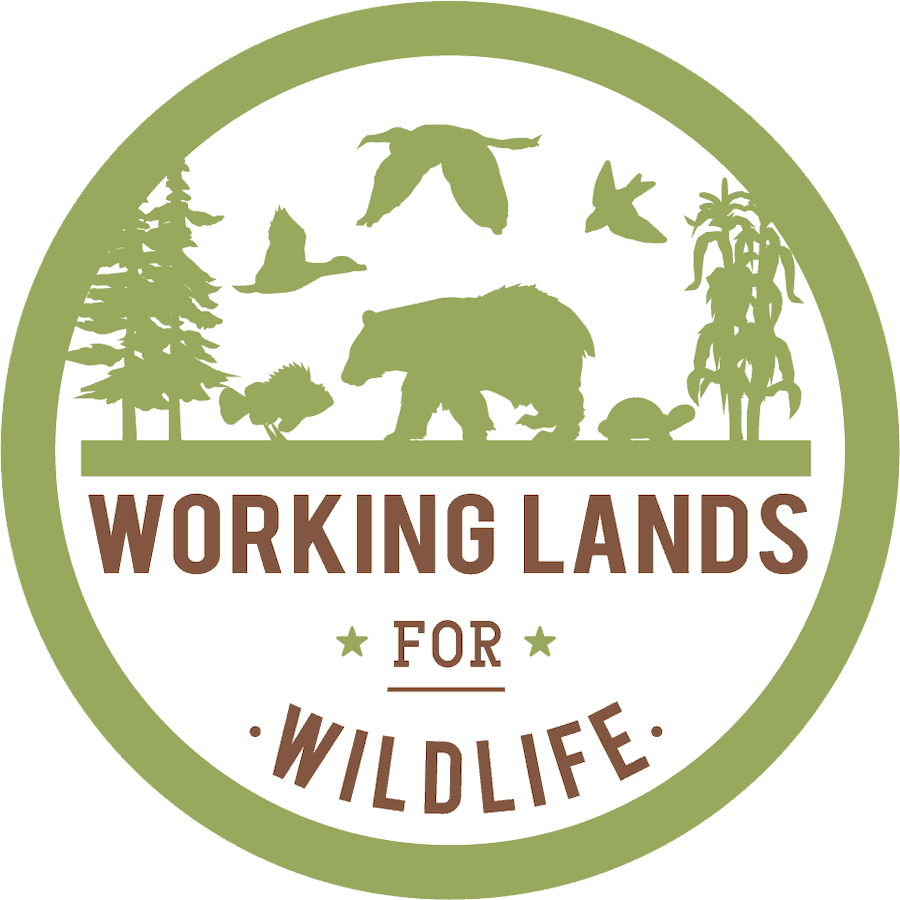-
Deerfield watershed Stream Crossings Explorer
-
by
Tab Manager
—
published
Apr 10, 2024
—
last modified
Apr 21, 2025 06:28 PM
—
filed under:
Maps,
WLFW
This tool helps you locate road-stream crossings based on your interests.
Located in
Learning & Tech Transfer
/
Apps, Maps, & Data
-
Defenders of Wildlife Private Lands Conservation
-
by
Tab Manager
—
published
Feb 18, 2023
—
last modified
May 29, 2025 05:58 PM
—
filed under:
Landowner Resources,
WLFW,
Defenders of Wildlife,
Landowner Information,
Working Lands for Wildlife,
Resources
Defenders works with private landowners, land trusts and other partners to communicate, educate and apply conservation and restoration techniques on the ground habitat to advance species recovery and wildlife coexistence on private lands nationwide.
Located in
Landowner Information
/
Landowner Resources
-
 Delaware Priority Area Shapefiles
Delaware Priority Area Shapefiles
-
by
Sage Voorhees
—
published
Mar 05, 2022
—
last modified
Apr 20, 2023 10:59 PM
—
filed under:
Information,
Northeast,
WLFW,
Delaware,
Northern Bobwhite Quail,
Boundaries & Priority Area Shapefiles,
Maps and Spatial Data,
Grasslands and Savannas,
Working Lands for Wildlife
Delaware, Priority Area for Northern Bobwhite
Located in
Information
/
…
/
Boundaries & Priority Area Shapefiles
/
Northeast
-
Does Cattle Grazing Reduce Fire Fuels and Fire Danger?
-
by
Rosanne Hessmiller
—
published
Feb 01, 2021
—
last modified
Dec 12, 2023 08:42 PM
—
filed under:
Wildland Fire,
News,
WLFW,
Forest Management
The last few fire seasons have clearly demonstrated that fires are coming more frequently and at sizes that challenge our ability to fight and/or control them. While grazing has been considered and even sometimes used as a fire prevention tool, the actual success and impact have not been clearly documented. This research is another step in learning how to successfully use grazing to reduce fire danger. We’ll be sharing more on this topic in future issues. January 11, 2021
Located in
News & Events
-
 DOI Nature-based Solutions Roadmap
DOI Nature-based Solutions Roadmap
-
by
Web Editor
—
published
Mar 19, 2024
—
last modified
Jul 22, 2025 07:58 PM
—
filed under:
Published Materials,
WLFW,
Grasslands,
General Resources and Publications,
Wildland Fire,
SE FireMap,
Grasslands and Savannas,
Working Lands for Wildlife,
Resources
The purpose of the Department of the Interior Nature Based Solutions Roadmap is to provide Department of the Interior (DOI) staff with consistent and credible information about nature-based solutions, such as which strategies match certain conditions and goals, what co-benefits they are likely to provide, example projects, and additional resources for project planning, construction, and monitoring.
Located in
Learning & Tech Transfer
/
General Resources and Publications
/
Inbox
-
Driptorch Digest No. 45 June 2020
-
by
Web Editor
—
published
Jun 26, 2020
—
last modified
Dec 12, 2023 09:08 PM
—
filed under:
Wildland Fire,
News,
Newsletter,
WLFW,
Driptorch Digest
A Newsletter for the Southern Prescribed Fire Community
Located in
News & Events
/
News Inbox
-
 Eastern redcedar burning tips
Eastern redcedar burning tips
-
by
Admin
—
published
Jul 14, 2021
—
last modified
Dec 12, 2023 08:38 PM
—
filed under:
WLFW,
Farmers,
Foresters,
Forests,
Prescribed Burning,
Cedar,
Video,
Wildland Fire,
News,
Landowner Information,
Landowners,
Redcedar
Landowners and forest managers are welcomed to learn about how to clear and Eastern redcedar and maintain their lands and forests with prescribed burns.
Located in
Training
/
Videos, podcasts, multimedia
-
 Economic and Production Performance of Native Grasses as Forage in the Fescue Belt
Economic and Production Performance of Native Grasses as Forage in the Fescue Belt
-
by
Bridgett Costanzo
—
published
Jun 11, 2019
—
last modified
Apr 21, 2023 12:37 AM
—
filed under:
WLFW Outcomes: Funded Research,
WLFW,
Northern Bobwhite Quail,
Research,
Grasslands and Savannas,
Working Lands for Wildlife
The primary purpose of developing this literature review and summary was to inform producers about the potential benefits from utilizing warm-season grasses in the Fescue Belt. Effectively, managing forages is not always straightforward for livestock producers. Summarizing the economic and production benefits from using warm-season grasses could help producers make more informed forage management decision and might encourage producers to consider adopting warm-season grasses. Furthermore, this literature review also gathered information about the potential benefits of using native grasslands as forage to the quail population in this region, which could likely result in an economic benefit to the producer from leasing farmland to hunters.
Located in
Information
/
Research
/
WLFW Outcomes: Funded Research
-
 Establishing Native Grass Forages:A Brief Overview w/ Dr. Pat Keyser
Establishing Native Grass Forages:A Brief Overview w/ Dr. Pat Keyser
-
by
Web Editor
—
published
Dec 30, 2020
—
last modified
Apr 21, 2023 03:36 PM
—
filed under:
Training Resources,
WLFW,
Webinars and Instructional Videos,
Northern Bobwhite Quail,
Webinar,
Grasslands and Savannas,
Working Lands for Wildlife,
Native Warm-Season Grass Forages
Day 1, Session 2. Native Warm-Season Grasses Webinar with Dr. Pat Keyser and Jef Hodges. Presented December 1, 2021.
Located in
Training Resources
/
Webinars and Instructional Videos
/
Webinar- Course on Native Warm-Season Grass Forages and Grazing Management for Bobwhites
-
 Field Borders-Wildlife (IL)
Field Borders-Wildlife (IL)
-
by
Bridgett Costanzo
—
published
Mar 12, 2021
—
last modified
Apr 21, 2023 12:13 AM
—
filed under:
Information,
field border,
WLFW,
Northern Bobwhite Quail,
cropland,
job sheet,
Job Sheets,
NRCS,
Grasslands and Savannas,
Working Lands for Wildlife,
NRCS Conservation Practices & Materials
Job sheet
Located in
Information
/
NRCS Conservation Practices & Materials
/
Job Sheets


